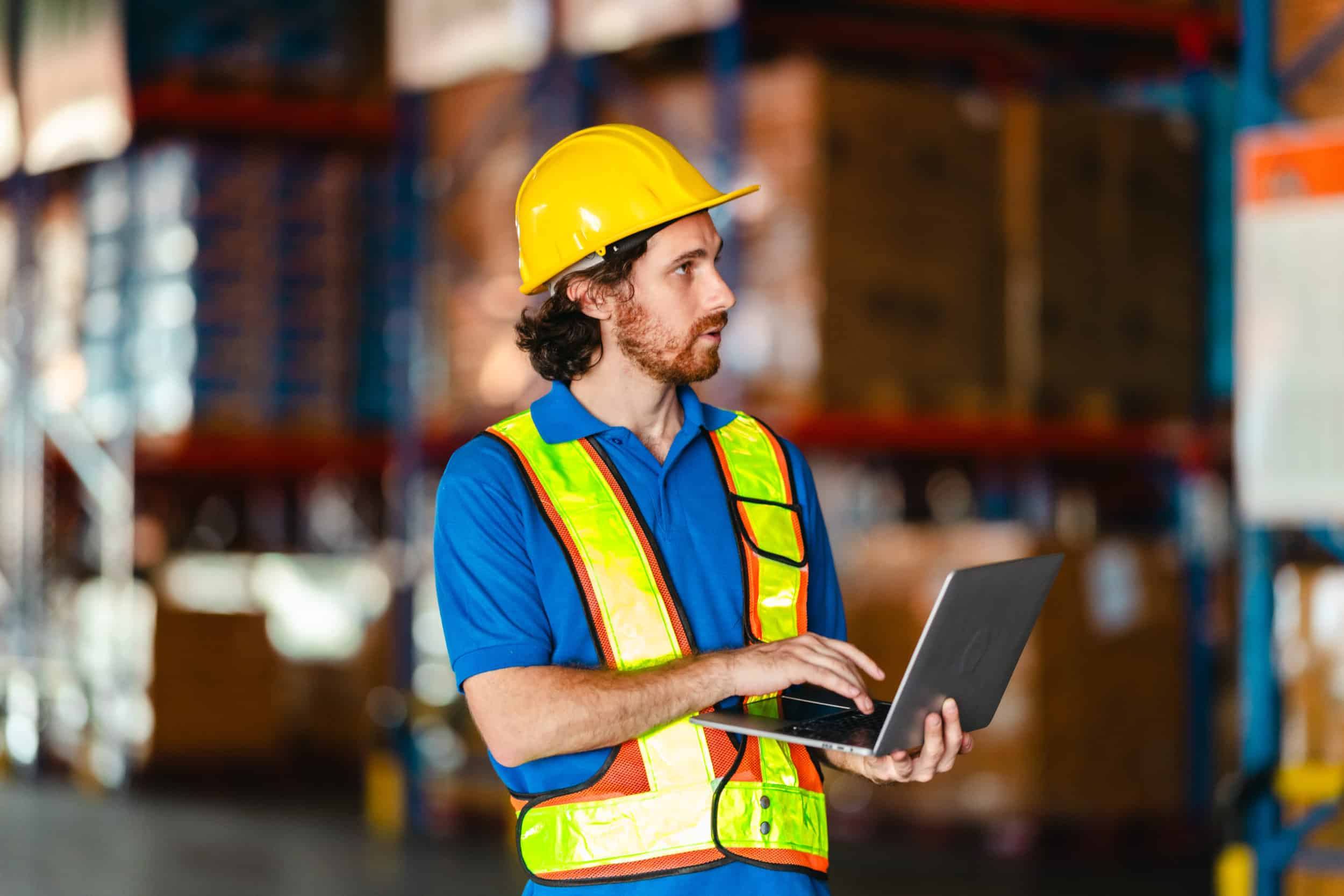Customers Don’t Care About Your Routes – They Care About Your Communication

The importance of delivery notifications when keeping customers happy
For logistics managers, warehouse managers, and business owners, route planning often feels like the heart of the operation. There’s pride in squeezing more stops into a shift, trimming wasted miles, and seeing a plan run like clockwork. Behind the scenes, those carefully optimised routes are a real achievement.
But from the customer’s perspective, those routes are invisible. What matters to them isn’t how efficient your planning tool is, but how confident they feel about when and how their delivery will arrive. In other words, they don’t care about your routes, they care about your communication.
And in today’s market, where customer expectations are shaped by global giants like Amazon, providing clear delivery notifications is no longer optional. It’s a baseline requirement.
The Shift in Customer Expectations

Not long ago, customers were happy enough with a broad delivery window: “sometime between 8am and 6pm.” That approach no longer cuts it. People have busy schedules, and the frustration of waiting around all day for a package can overshadow the entire experience.
Now, consumers prioritise delivery reliability, visibility, and transparency, particularly real-time status updates, when judging logistics providers.
They want to be kept in the loop at every stage; a confirmation when their order has been processed, a reminder on the day of delivery, an estimated arrival time they can rely on, and even updates if things change on the road.
Think about it: which feels more professional – a vague promise of “sometime tomorrow,” or a message saying, “Your delivery will arrive between 11:30 and 12:30. Click here to track its progress”? The second doesn’t just inform; it builds trust.
Why Delivery Notifications Matter More To Customers

Of course, routes are still critical from an operational point of view. They reduce fuel costs, ensure drivers work efficiently, and help businesses make the most of their fleet. But the truth is, customers rarely think about these details. They only notice when something goes wrong.
What they do notice is whether they’ve been kept informed. Timely delivery notifications make the difference between a smooth, positive experience and one that feels stressful or unreliable. A beautifully optimised route loses its value if the customer isn’t home to receive the order because they didn’t know when to expect it.
Research has found that proactive communication reduces complaints by 40% and increases customer satisfaction by 85%. In relation to deliveries, good communication transforms the process into a partnership. Customers feel prepared, rather than left waiting or wondering. That sense of control is often what they remember most – sometimes even more than the product itself.
The Business Benefits of Better Communication

This isn’t just about customer satisfaction, though that alone is important enough. Strong communication also has very real benefits for the businesses providing it.
– Reduced failed deliveries – customers who know when you’re arriving are more likely to be at home.
– Lower customer service costs – proactive updates mean fewer “where’s my order?” calls.
– Higher customer loyalty – a smooth, reliable experience encourages repeat business.
When viewed this way, communication is not just an add-on to delivery. It’s a core part of how you protect margins, streamline operations, and strengthen your brand.
The Risks of Staying Silent

On the flip side, failing to provide these updates can seriously damage your reputation. Customers who feel left in the dark may vent their frustration publicly, and in an age where reviews and social media carry huge weight, that negativity spreads quickly.
Worse still, the effort you’ve put into optimising operations is undermined. You may have delivered on time, but if the customer spent the day waiting without updates, they won’t see it as a success. Instead, they’ll remember the frustration.
Technology as an Enabler

So how can businesses make this happen without overwhelming their teams? This is where technology plays a crucial role. Modern delivery management systems make it simple to automate communication, sending out SMS or email updates at exactly the right moments.
Real-time ETA tracking means customers don’t just get an initial delivery slot, they get accurate updates as conditions change. A driver stuck in unexpected traffic no longer means a frustrated customer; it simply triggers a new message with an adjusted arrival time.
These systems also allow for customisation, so the notifications reflect your brand voice rather than feeling generic. That consistency reinforces professionalism and strengthens the impression you leave with customers. And because the process is automated, it scales effortlessly, whether you’re running five deliveries a day or five hundred.
What This Means for Different Roles

The benefits of stronger delivery communication ripple through every level of an organisation:
– For logistics managers, it means fewer wasted journeys and reduced operational costs.
– For warehouse managers, it means smoother dispatches and fewer last-minute headaches.
– For business owners, it means delivering a customer experience that drives loyalty and competitive advantage.
Communication as a Competitive Advantage

In a crowded market, offering excellent products and efficient logistics is only part of the story. What truly differentiates one business from another is how easy it is for customers to buy from you, and that includes the delivery process.
Clear, reliable delivery notifications are fast becoming a key competitive advantage. Customers increasingly expect them, and if your business isn’t providing them, they may turn to a competitor who does.
The lesson here is simple: the best logistics operations aren’t just efficient behind the scenes. They’re visible, transparent, and communicative in a way that puts the customer at ease.
Final Thoughts
Great delivery experiences don’t just happen in warehouses or on the road. They happen in the customer’s inbox and on their phone screen, in the moments where communication bridges the gap between operational excellence and customer satisfaction.
Routes matter, of course – but they’re not what your customers will remember. What they’ll remember is how informed they felt, how easy the process was, and how confident they were that their order would arrive on time.
By prioritising communication through timely delivery notifications, you’re not just meeting expectations, you’re building trust, loyalty, and a reputation that lasts.
👉 Book a demo today and see how effortless it can be to keep your customers informed and delighted.
Frequently Asked Questions
Why are delivery notifications so important for customers?
Delivery notifications give customers peace of mind by letting them know exactly when their order will arrive. Instead of waiting around all day, they can plan their time more effectively. For businesses, this also means fewer failed deliveries and complaints.
Do customers really notice if communication is missing?
Yes. Studies show that poor communication is one of the top reasons customers leave negative reviews. Even if the delivery itself is on time, a lack of updates can create stress and frustration that overshadow the experience.
What’s the best way to send delivery notifications?
The two most common and effective methods are SMS and email. SMS is ideal for time-sensitive updates because it’s read almost instantly, while email works well for confirmations and detailed information. Many businesses use a combination of both.
How do delivery notifications reduce costs for businesses?
When customers know their delivery is on the way, they’re more likely to be available to receive it. That means fewer failed attempts, less wasted fuel, and lower driver time. It also reduces the volume of “where’s my order?” calls to customer service teams.
What information should a delivery notification include?
The most valuable details are:
– A clear delivery date or time window
– Updates if timings change
– A way to track progress in real time
– Confirmation once the delivery has been made
Keeping the message simple, clear, and accurate is more effective than overwhelming customers with detail.
Are delivery notifications just for large companies?
Not at all. While big retailers and couriers have set the standard, smaller businesses can benefit just as much. In fact, providing clear communication can help smaller businesses compete with larger players by offering a professional and reliable customer experience.
How can businesses automate delivery notifications?
Modern logistics software makes it easy to send notifications automatically. Once a delivery is scheduled, updates can be triggered at key stages – such as dispatch, estimated arrival, or proof of delivery – without manual intervention from your team.
Maxoptra System
© MaxOptra, 2023. Privacy Policy and Cookies
